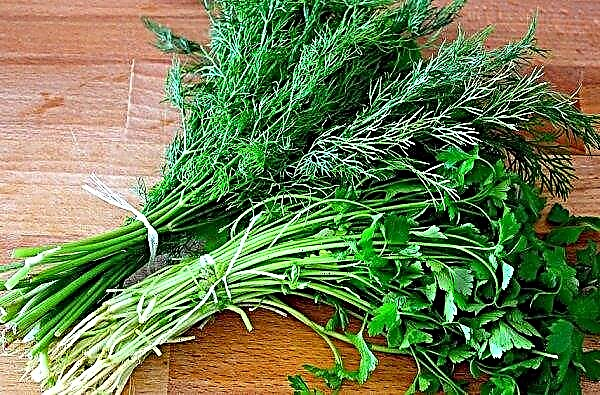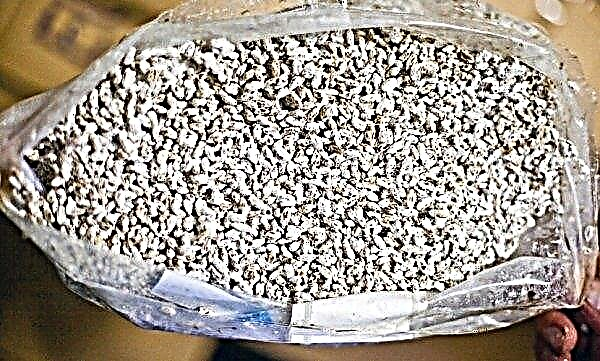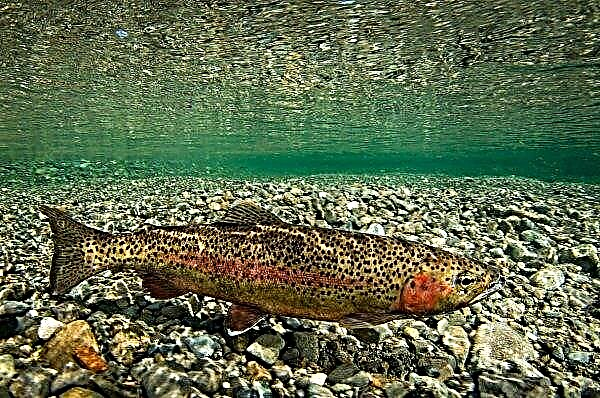Autumn work in the apiary is one of the main procedures that accompanies all successful beekeepers. With its help, you can effectively prepare bees for a long wintering, as well as lay the foundation for the further expansion of the apiary. This article will examine in detail how to prepare bees for wintering, and also describe the main preparatory stages of the procedure.
Why do we need autumn work in the apiary
Before the start of wintering, any apiary requires careful preparation for an unfavorable period. Despite the climatic features of the region, even in the southern geographical areas during this period there is a cooling, sharply reducing the food supply for insects. In order for an apiary to survive an unfavorable period, many procedures are required to protect bee colonies from extinction.
This stage in modern beekeeping is a mandatory measure. Thanks to him, you can save the population of insects, as well as expand the apiary if possible. In addition, as you know, the length of the productive period in bees is quite short, so the autumn work also helps to rejuvenate families. Without this, in the spring, most families will weaken, and the productivity of the queens will practically cease.
Work with bees
Since insects are the main value in the apiary, the main work on the autumn preparations for the next season begins with exposure to the bees. First of all, the bee family requires rejuvenation, as well as the creation of reserve swarms for future brood. In addition, insects need a thorough examination, before winter they can manifest a variety of pathologies, including herd character.
Did you know? The first hives appeared about 6 thousand years ago, during the period of massive domestication of bees in the territory of modern Greece, India and Egypt. They were non-separable clay vessels of various shapes and sizes.
Spare nucleus formation
The nucleus plays a major role in ensuring the rejuvenation of apiaries, as well as increasing the number of fruit families. Within its walls, maturation and maturation of the infertile uterus takes place, before it is resettled to a young family or in case of death of the old one. Sometimes nuclei are created from resettled young families. In this case, a young productive brood is obtained by the beginning of spring.
There are two types of constructions:
- freestanding small hives - the bees and the uterus are transferred to the structure after pumping out the honey or during the extraction of the frames;
- standard houses - fruit hives are divided into compartments, while each of the departments must have its own notch.

The formation of nuclei begin approximately 1–2 days before the release of young queens. Bee houses are carefully examined for all structural flaws, and then the necessary number of frames is placed and installed in one of them top dressing. At the same time, young worker bees are removed from the main family and transferred to a cold place with a temperature of about +10 ... + 15 ° С. This signals the insect about the onset of an unfavorable period, and also activates the natural instincts of the search for a new uterus.
To determine the number of houses needed, the following rule is used: in order to save the population from aging and freezing of reserve queens, there should be approximately 10% of the main amount, in order to increase the population in spring, their number should be increased to at least 30%. Determining the size of nuclei is also quite simple, each of these houses should contain about 2–4 frames, at least 1 of which should be filled with fertilizing.
Important! If the nucleus consists of several compartments, all partitions must be sealed so that the pheromones of the uterus do not mix. Otherwise, insects can leave the hive.
Autumn layering with spare uterus
As soon as a new uterus is born, it is transferred to the nucleus, and then young bees are also placed in the house. To populate the nucleus correctly, about a quarter of the standard frame will require about 150 g of insects. After that, the populated nucleus is transferred to a cool and shaded place for 2-3 days. During this time, the bees should get acquainted with the uterus and settle in a new home. After a period of time, nuclei are transferred to the main hives; before opening, the bees are recommended to be fed, otherwise part of the insects may leave the family.
If the hive is formed from a swarm separated from the fruit uterus, it is not recommended to plant an infertile uterus to them. Such bees are reluctant to perceive her, which often threatens her with death. For this, in the nucleus, the family is kept together with the old, fertilized bee. After laying eggs, they seize it, and instead they plant a barren one. Before hatching the larvae, the new bee acquires the smell of the family, after which the working bees perceive it as their own, which is the guarantee of full fertilization and obtaining high-quality replenishment.
In order to create strong and full autumn layering, it is necessary to start breeding a new population about a month before the last date for collecting the last honey. This will allow you to get young sexually mature individuals that steadily survive the frosts and in the spring give rise to a strong and fruitful hive.
Determining Family Strength
This procedure in beekeeping makes it possible to understand what percentage of families will successfully survive the wintering, and the death of which is only a matter of time. The strength of the family is determined on the basis of the number of new individuals raised after the last harvest of honey, as well as on the density of population of the frames. That is why often the strength of the family is associated with the fertility of the bee.
When diagnosing, you need to determine the percentage of open and closed brood. If the first is much larger - the uterus is actively forming new offspring. Thus, strong families are characterized by high brood, as well as the active population of hundreds of new larvae. A small number of broods, as well as uneven colonization of hundreds of larvae, indicate a low swarm strength.
To verify the strength of the family, an additional inspection should also be carried out. The appearance of the queen of the swarm should also be assessed: the young and productive uterus is always with a round abdomen, is not afraid of a person and lays eggs intensively. Weak always small, incomplete and inactive.Important! To strengthen a weak family in the hive, it is necessary to add a young uterus to the hive, otherwise the bees can leave the house or even die.
Particular attention is required to be paid to families who have released young swarms, used plentiful bribes, joined from late swarms, and even stay for a short period without a bee. In most cases, they require additional care and attention.
Nest formation
The successful wintering of the swarm directly depends on the correct formation of the nest. At this time, the beekeeper must determine the optimal requirements of each house, as well as create the necessary microclimate for the successful hibernation of insects. This stage is considered one of the most demanding and responsible, since any errors at this time always lead to the death of bees.
Pre-assembly of nests for the winter
Most often, this procedure is combined with a prophylactic examination of the apiary, but it can also be carried out as an independent measure.
The assembly of nests for the winter involves the following tasks:
- adjustment of the location of feed reserves;
- staffing of bee houses with the necessary number of cells;
- replenishment of feed reserves (if necessary).
The assembly begins with a thorough inspection of the honeycombs, only dark honeycombs of the correct shape and structure are suitable for a long wintering. Frames with a large number of drone cells, clogged with bee bread or with a low amount of honey, are discarded. The base of the hive should be a framework with a high brood content, they are placed in the center, surrounding 1-2 empty honeycombs (brown).
On the edges of the hive they put frames with sealed honey; they will become the fodder base of the family until the next season. Their number varies from the size of the bee house, while in one honey frame should not be less than 2 kg of pure honey. If the rejected honeycombs contain brood, for a while they are set at the edges, and then after the offspring are replaced by fodder.During the assembly of beehives, one should pay attention to the amount of bee bread. For one average family, stocks of matter should be about half the frame. It is best if such foci of the product are located in small foci near honey.

Hive inspection
Although insects develop best without human intervention, inspecting their homes before wintering is a must.
Spend it as follows:
- With a chisel or other sharp object, disconnect the lid of the house from the base and direct a few portions of smoke into a small gap. If there are a lot of insects, the lid is closed for 10-15 seconds.
- Disconnect the lid and the top drawer of the house and place them on a rib on top of the structure. After you get to the frames, the boxes must be removed in a separate place.
- Remove the frames with the least activity from the hives (often they are on the edges). If the insects are activated, they must be driven away by smoke.
- Inspect the condition of the family: the number of bee brood, the activity of insects between the frames and the amount of honey stocks. If at least one of these indicators is not pronounced, the family requires immediate intervention. Often in this case, it is at the stage of extinction. A huge amount of death should also be alerted, which directly speaks of problems, as well as traces of the manifestation of characteristic diseases (varroatosis, nosematosis, fungal infections, etc.).
Important! Inspection of the hives should begin from the opposite side to the flyway, otherwise you will stand in the way of the departure of angry insects.
Sort Frames
All frames selected from houses are sorted into three groups:
- fodder - they contain the largest amount of sealed honey. They are put in a separate storage, creating a food base for insects throughout the winter or as a reservoir for late selection of the product;
- low-honey - have less honey than feed, but they are well sealed and sealed against external influences. Such frames are often brown or light brown. They are stored separately and used in the spring to increase nests;
- other - they contain the least amount of honey or the product is sealed poorly enough. Honey is often pumped out from unsealed frames, the rest are used for further resettlement in hives, as a stimulant for laying eggs.
Fumigation of honeycombs
After picking bee houses, sorting and selecting frames, they carry out the so-called fumigation. Its main goal is to protect insects from various parasites, as well as all kinds of larvae, which in the future can become a serious danger. To carry out the procedure, the hives are filled with the required number of frames, while they must not be in contact with each other. The extensions are installed one above the other, and all the cracks are sealed. Use wet clay or thick dough for this.
Under the lower part of the column, 2 cases are placed, a floor of sand about 5 cm thick is placed on the bottom of the column, or a refractory brick is laid. A small roasting pan with hot coal is placed on the flooring, on which dry sulfur mass is placed. The amount of substance is selected strictly, for each case should be about 15-20 g.
After the sulfur has flared up, the lower case is installed under the column, after which the lid is closed, and all the cracks are sealed. In this form, the house is kept for at least a day, after which it is disassembled and aired. For the effectiveness of fumigation, it is repeated, with an interval of 2 weeks.
Preparing the hive for wintering
In order for the bees to successfully winter, it is necessary to prepare the house itself. To do this, the structure must be isolated from the cold, and also sealed to the maximum from precipitation and all kinds of pests. This is the basis for the preparation of the entire structure.
The main danger for bees is rodents, in the spring they can penetrate the house, destroying its integrity and destroying food supplies. To avoid this, all lower slots must be closed and sealed with clay. Only one upper notch is left open, while the gap should be minimal. All seams, as well as other cavities, are subject to sealing, which will best help to avoid drafts inside the structure.Did you know? Honey is one of the oldest foods used by humans. For the first time, mankind began to collect it back in the Stone Age, about 15 thousand years ago.
Warming hives will help prevent freezing of insects. To do this, use any materials prepared from natural compounds. Synthetics are often not appropriate for this, as they are a source of deterrent odors. Warming begins with the creation of a protective casing of wood or plywood. It is a box 50 mm wider in diameter and 100 mm higher than the house itself, without a lid and bottom.
The casing is fixed around each hive, exactly in the center. The cavity between the casing and the house is filled with insulation. Most often, dry straw, hay, moss, sawdust, needles, husks, etc. are used for this. You can replace them with a foam layer, since this is one of not many synthetic substances that have almost complete inertness.
2-3 small pillows are placed under the cover, between which a layer of newsprint should be provided. It will absorb excess moisture, protecting the hive from high humidity. The outer side of the roof of the house, as well as the bottom, if possible, also insulate. Finish the preparation by installing on the casing a roofing made of slate, metal or sheet metal.
Disease handling and control
All kinds of diseases in the autumn period are not uncommon for both higher animals and bees. That is why before winter, if necessary, insects should be cured of any pathologies. Otherwise, a decrease in immunity due to winter suspended animation will negatively affect the family size and will lead to the death of most individuals.
Against Varroatosis
Varroatosis is a dangerous parasitic disease caused by small ticks. Many methods are used to treat the disease, including zootechnical ones. Most often, therapy includes a variety of chemically active substances.
Among them, drugs are especially popular:
- "Apistan";
- Varotom;
- “Varostop”;
- Bayvarol;
- "Gabon";
- "Pericin";
- Apiprotect;
- "Bipin";
- "Warropol";
- "Tactician".
Apply such funds once after pumping out honey, they are bred in clean water, and then used to spray insects. The main disadvantage of drugs is the addiction of parasites to the main active means, therefore, once every 2-3 years, the means used must be changed.
Replace active agents with more gentle solutions, the safest of them are:
- mixture of alcohol and lavender - in 100 g of 96% alcohol dissolve a few drops of lavender oil, then the mixture is poured into a small saucer and set in a hive until complete evaporation;
- thyme greens - a freshly cut plant is finely crushed, wrapped in gauze and laid in an even layer over the frames. As they dry, the tab is removed, often about 2-3 procedures are used for treatment;
- oxalic acid solution - a 2% solution is prepared from the concentrate, with which each frame is moistened, with a calculation of 10-12 ml.
For the prevention of varroatosis, it is necessary:
- regularly use medications for preventive purposes;
- before the young bees share, it is imperative to inspect the insects for parasites;
- support only strong families, weak unite or destroy;
- periodically clean the apiary from plant thickets.
From fungus
The most susceptible to the fungus are the larvae and pupae of bees, which often leads to their death. Their body is often not characterized by active protection against infections, so this creates ideal conditions for the development of fungi. The main cause of infection is considered to be adverse conditions for insects. In most cases, the hives are affected by the fungus, located in the shade, in humid conditions, with insufficient ventilation.
Fight the problem as follows:
- Infected cells are seized and melted to wax.
- Sick families are transferred to a clean hive, the uterus is changed to a new one.
- Further, insects are treated with complex fungicides ("Ascocin", "Ascocide", "Mikoask", "Dicobin", "Unisan"). Depending on the type of preparation, fungicides are used both for spraying insects and for treating the feed base.
- The infected beehive is sterilized; any household disinfectant (chlorine, formaldehyde, potassium permanganate, etc.) is used for this.
Against rot and nosematosis
The development of foulbrood, as well as nosematosis, poses no less threat to insects than fungus and ticks. By decay means a serious bacterial disease that affects closed brood. Recognizing such pathologies is quite difficult. At the first stages of development, the ailment is practically not manifested, however, with a massive lesion, it causes a discoloration of the offspring, as well as suppuration of the larvae, accompanied by an unpleasant odor.
The disease is extremely dangerous, since pathogen spores can remain in bee remains for up to 30 years. Therefore, in order to prevent its spread, sick families are destroyed and disposed of, and the hive and its contents are disinfected with chlorine-containing or other household means. After that, everything is thoroughly burned with a blowtorch.
Beehives adjacent to sick bees are fed with antibiotics for preventive purposes. For this, 2 g of Norsulfazole and 1 g of Ampiox are added to 1 liter of sugar syrup. The resulting mixture is spent on 4-5 frames. Feeding is carried out about 3-4 times every 7 days. If the disease has developed in a neighboring apiary, bees also need therapeutic feeding. This procedure is done at least 2 times with an interval of 7 days.
Nosematosis is caused by endoparasites that develop in the digestive tract. It is quite simple to determine the defeat by pathology, since it causes an upset stomach with all the characteristic signs of the process, including diarrhea. Despite the fact that in most cases the parasite does not cause mass death of insects, its development weakens the family and provokes related problems.
To prevent nosematosis, bees need to provide a constant microclimate - this humidity is about 80% and the temperature for hibernation is +4 ... + 5 ° С. Insects also provide a sufficient amount of high-quality food supply. In addition, it is recommended to feed the bees with sugar syrup. For the treatment of pathology, insects are transferred to a clean hive, dirty ones are disinfected with chlorine-containing substances or other household means. Alternatively, blowtorch firing can be used.Did you know? The legendary Egyptian Queen Cleopatra owes its beauty to bee products. Every day she used all kinds of means based on them to rejuvenate and tone the skin.
They treat sick insects with Fumagillin top dressings. A bottle of the drug is diluted in 25 liters of syrup, about 500 ml of fluid per day is used per average family. Such top dressing is carried out for 10 days, so about 5 l of the mixture will be needed to treat one hive.

Tips from experienced beekeepers
Key secrets to successfully preparing an apiary for wintering:
- during preparation for wintering, a sufficient amount of food should be left to the insects, otherwise theft in the apiary cannot be avoided. This leads to weakening of some families and subsequent problems;
- as a food base, only high-quality flower honey should be used; highly specialized products are of little use for this;
- Before wintering insects, it is necessary to feed them with an antibiotic (for preventive purposes);
- fumigation of the house can be replaced by disinfection with household sterilizing solutions;
- after sterilization, the houses must be ventilated, otherwise a sharp uncharacteristic smell can scare off insects;
- for feeding, instead of expensive honey, you can use cheaper thick sugar syrup;
- insect mortality during the wintering process is a natural norm, but its amount should not exceed 5% of the total mass of insects.
Preparing an apiary for wintering is a necessary and quite complex process. It requires a beekeeper great attention, as well as efforts, including certain knowledge. However, at the exit in the spring, this makes it possible to preserve the bee population, as well as increase the volume of honey production. And this is the main evidence of successful and productive beekeeping.













